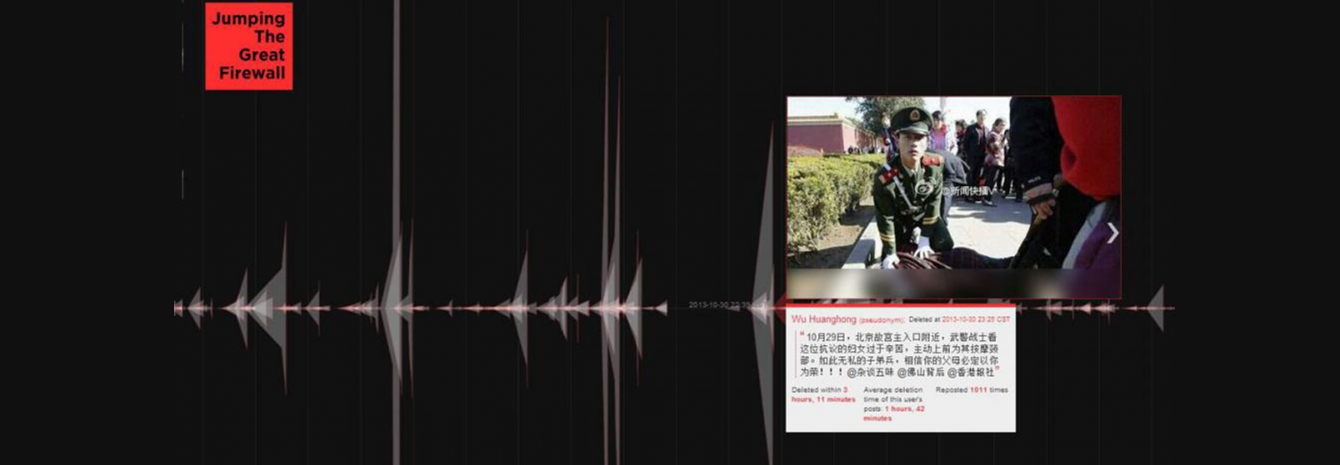How can image-based blogging defeat Internet censorship?

Internet use in China is policed—watched over, censored, and punished—by a human and technological program nicknamed “The Great Firewall.” Content deemed politically unacceptable or sensitive (like the Tiananmen Square massacre) is kept invisible to Chinese Internet users.
Yet there is a way to vault over the Firewall: posting controversial content as images on the Twitter-like microblogging platform Weibo. At Columbia’s Center for Spatial Research, Jumping the Great Firewall visualizes this spread of image-based, illicit content on Weibo from September 8 to November 13 in 2013.
Images are trickier for automated search programs to trace, so Weibo users often turn their writing into pictures before taking screenshots of their posts, then posting and reposting those shots after the original is deleted. Like a digital pulse, Jumping the Great Firewall marks in red the censored Weibo posts along an x-axis of time and y-axis of report count. Clicking on one post expands it into dozens of different, simultaneous posts, each listing who posted it, how many times it was reposted, and how many minutes before its deletion.
Jumping The Great Firewall documents kaleidoscopic cyber democracies. What else is out there? Learn more.
Make Your Commitment Today
